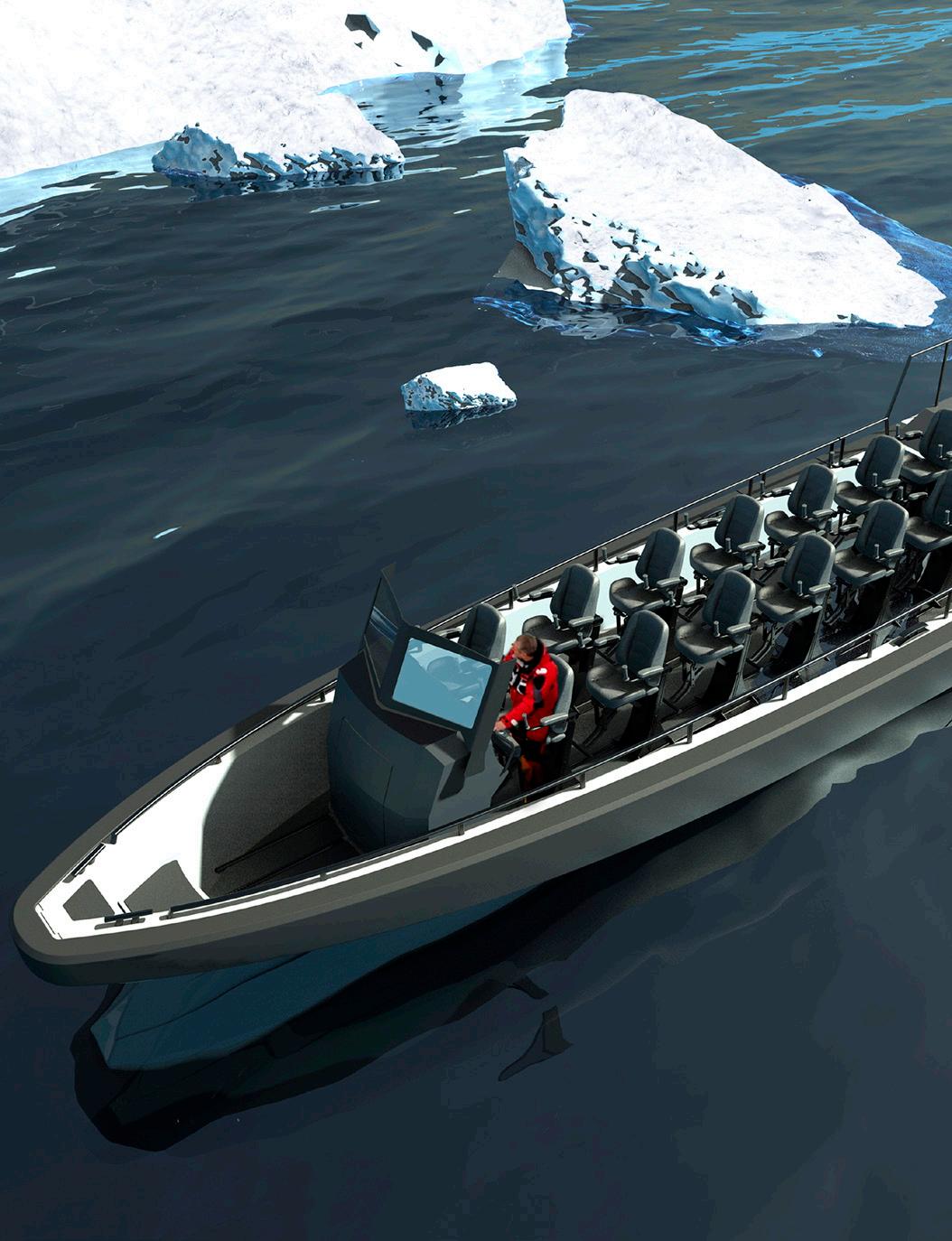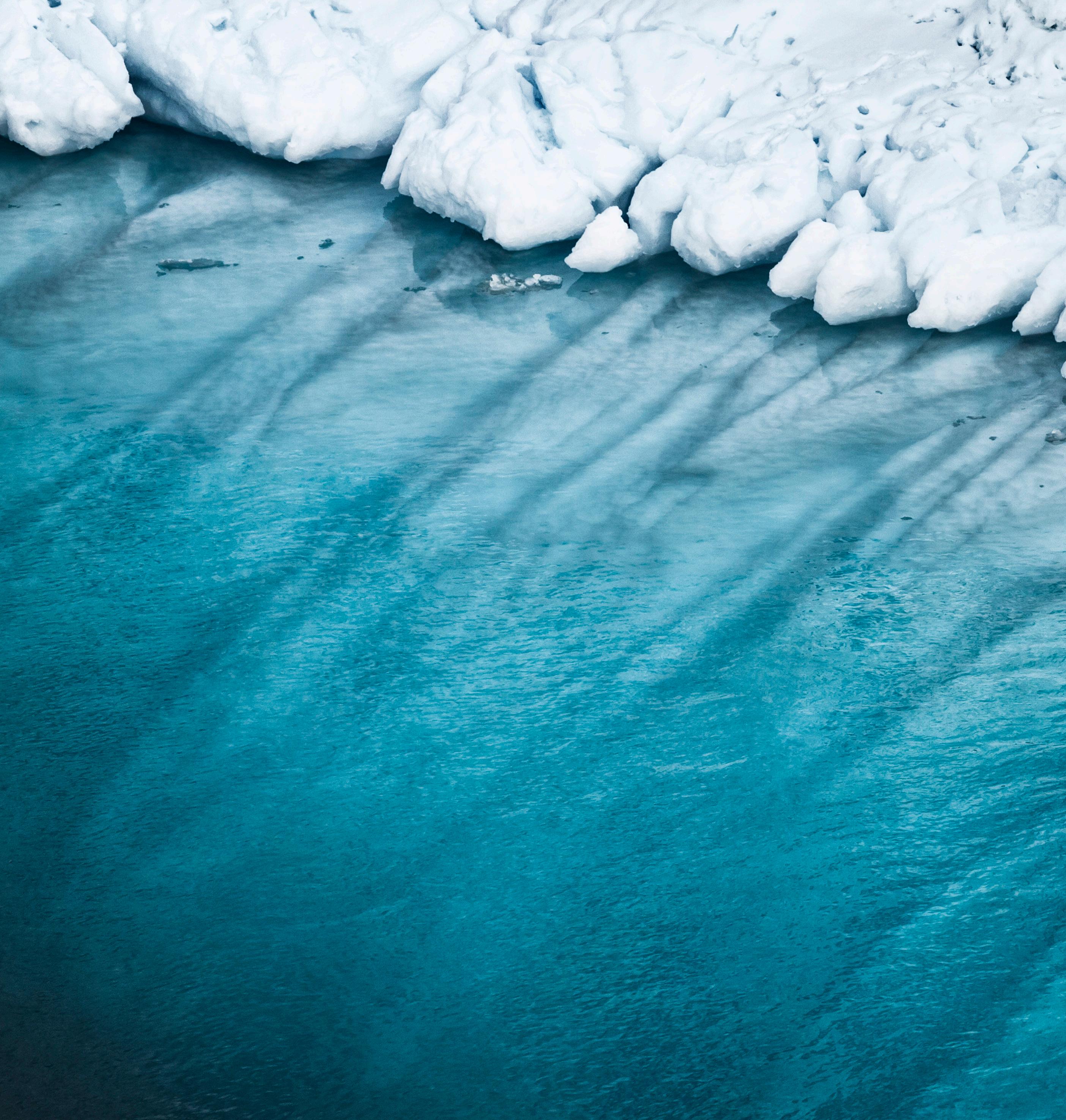
7 minute read
Landscapes
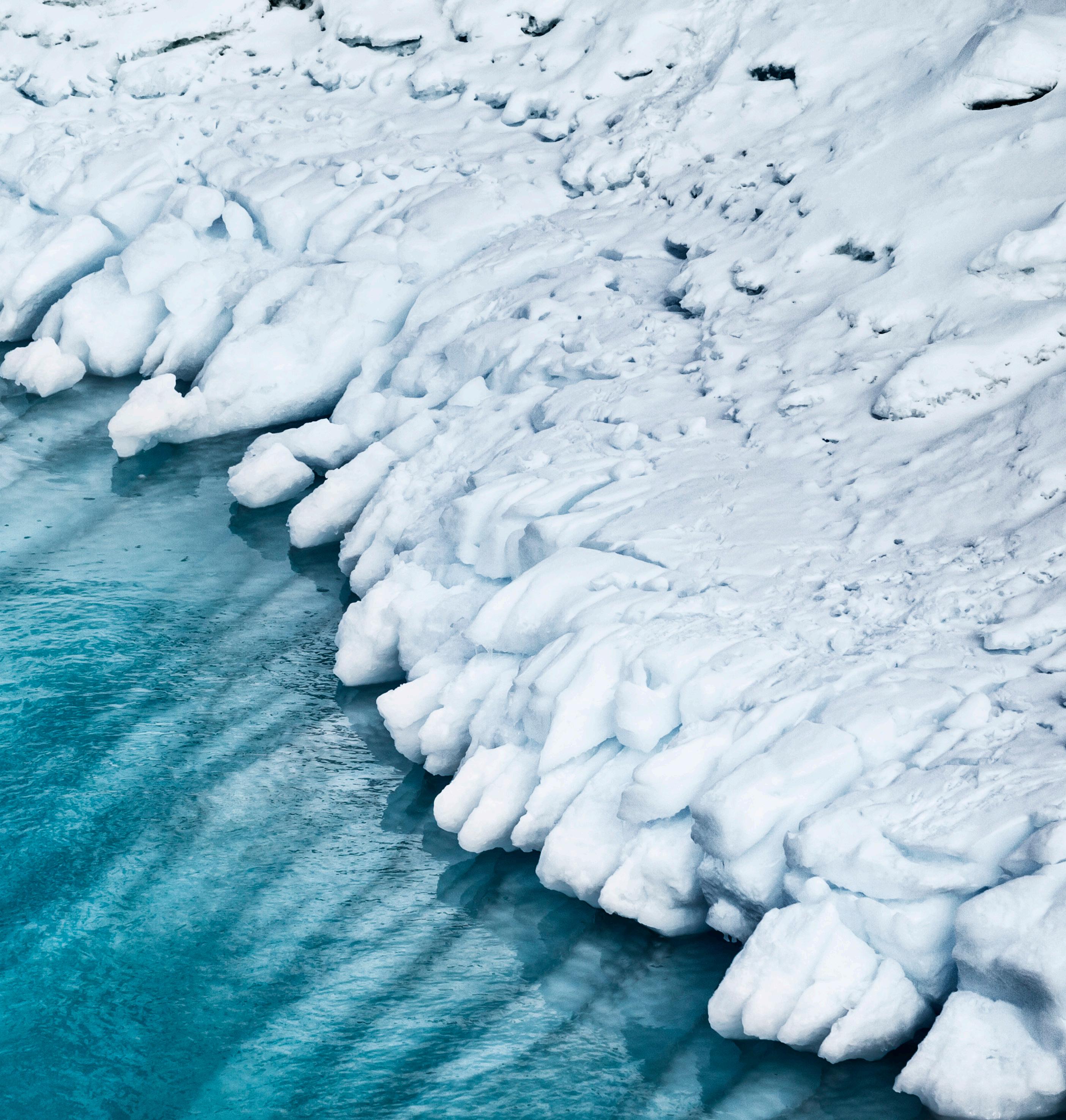
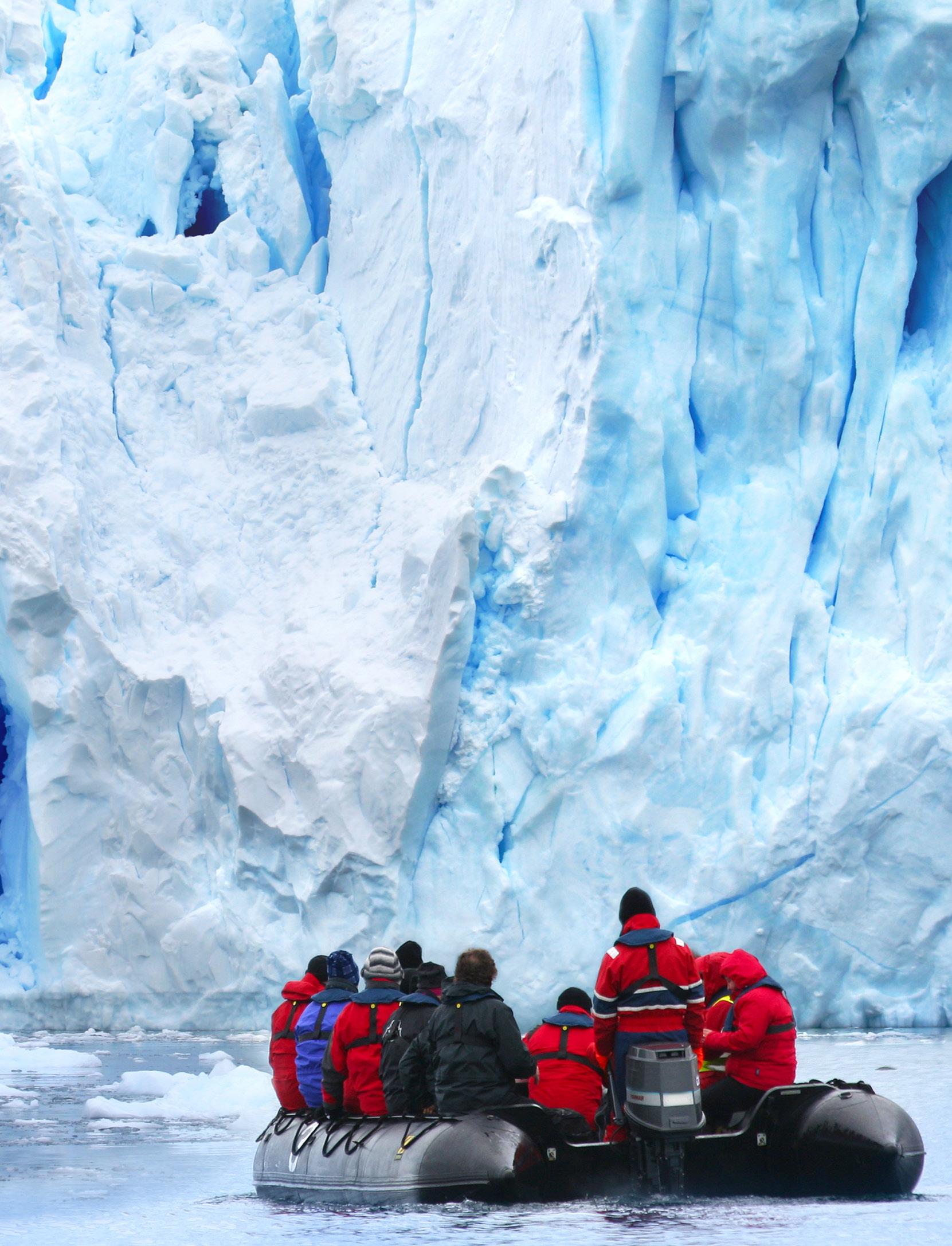
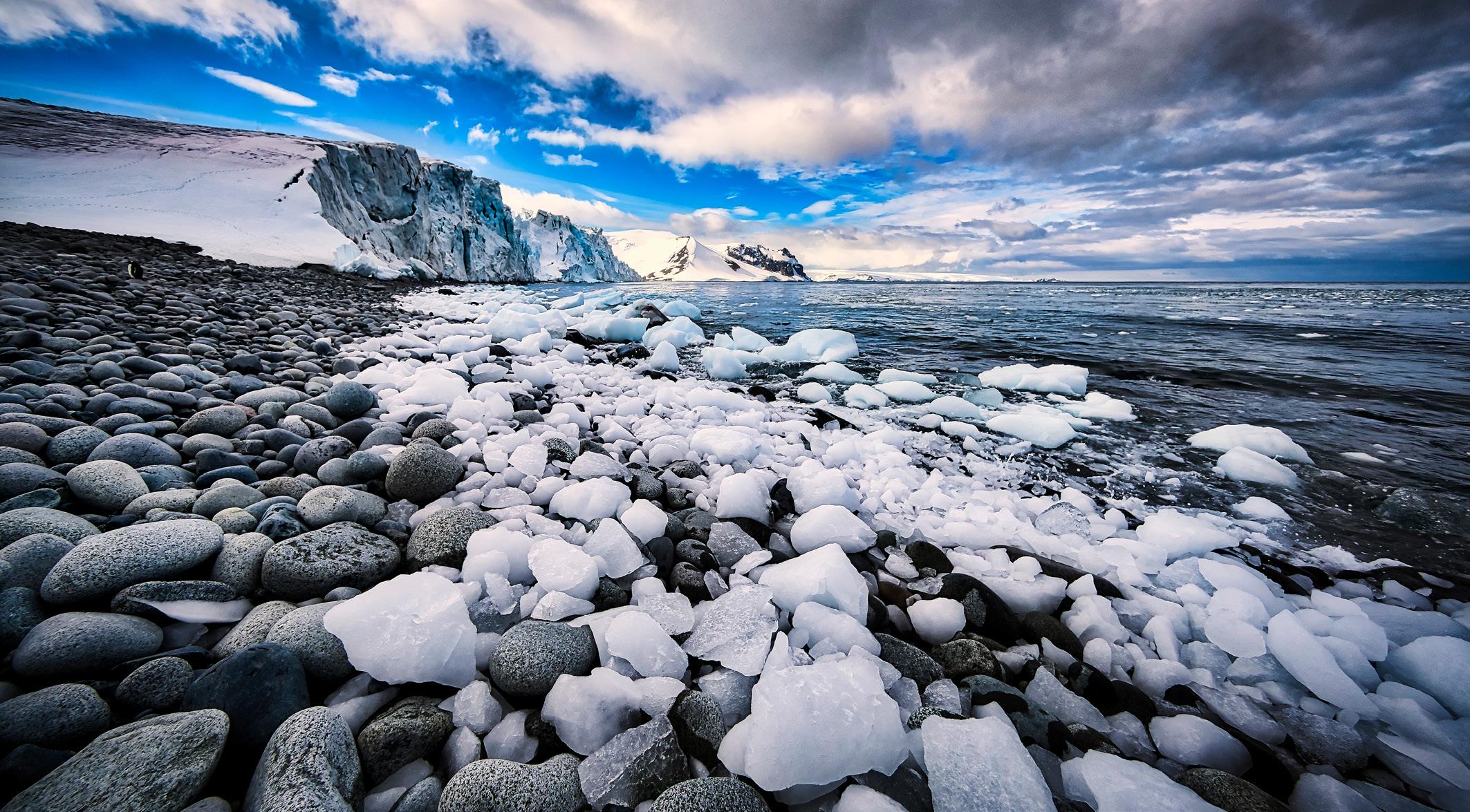
Antarctica
It might be the prospect of spotting unique and elusive wildlife that draws many an expedition cruiser to Antarctica, but more often than not, it is the landscapes that steal their heart. A vast, white wilderness whose ethereal beauty is hard to fathom, Antarctica is one of the few places on Earth that truly puts into perspective the expansiveness of the planet, and the almost microscopic presence of us mere mortals. The treeless panoramas of snow, ice, water and rock in this southernmost desert are unlike any other, with few plants able to survive Antarctica’s harsh conditions – the coldest on earth.
Just two seasons exist in Antarctica – summer and winter – and Viking’s Antarctic expeditions are in full swing during the warmer months of October to March. During the Antarctic summer, the sun is almost always in the sky and, in the peak of summer, hardly sets at all. While the Midnight Sun is observed in several towns in the northern hemisphere you need to venture to Antarctica to see it in the southern hemisphere. During the magical summer period, the sea ice retreats, the land is brimming with abundant animal life and the temperatures on the Peninsula can even reach a balmy 10º Celsius near the coast.
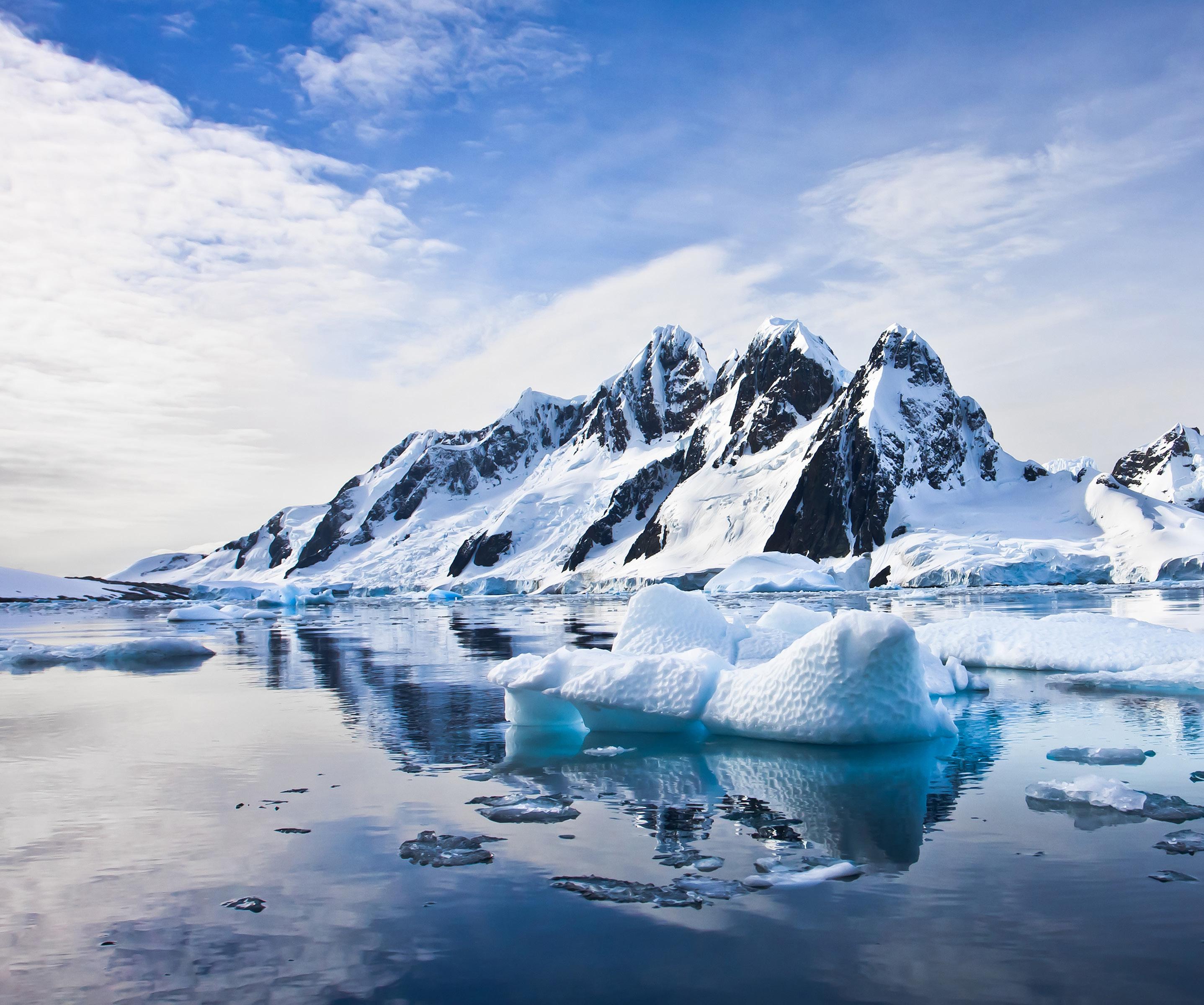
October and November
With the Antarctic Peninsula awakening from its winter hibernation, daytime temperatures grow to -7º to 2º Celsius and pristine snowscapes are the stars of the show. Expect to see an abundance of landscape sculptures in the form of ice floes and icebergs, perfectly preserved from the previous winter. Soft snow dusted on the ground creates ideal camping conditions for optional shore excursions, and wildflowers can be seen blooming across the verdant hills of the Falkland Islands.
December and January
During Antarctica’s mid-summer, days can seemingly go on forever in a brilliant blur of blue skies and glowing ice shelves. 20-hour days are the standard at this time, with visitors during the height of summer being blessed with those incredible 24-hour days. Temperatures are also at their highest in January, so glaciers calve more often and there is less snow on the shores and rocky cliffs.

February and March
In late summer, the season begins to wind down and snow cover is at its lowest, but this happens to be the best time for some truly spectacular sunrises and out-of-this-world sunsets. You might also see more colours of the rainbow than usual thanks to bright pink and green snow algae thriving on the sunshine under the surface of the water. Because some of the land ice has melted during summer, this period is the best time to visit if you’re a keen explorer wanting to feast your eyes on as much of the Antarctic landscape as possible. Late summer is also when whale watching opportunities are at their best.
Left to right: Rocky cliffs exposed; Midnight sunset on icebergs Next page: Icebergs, Antarctica

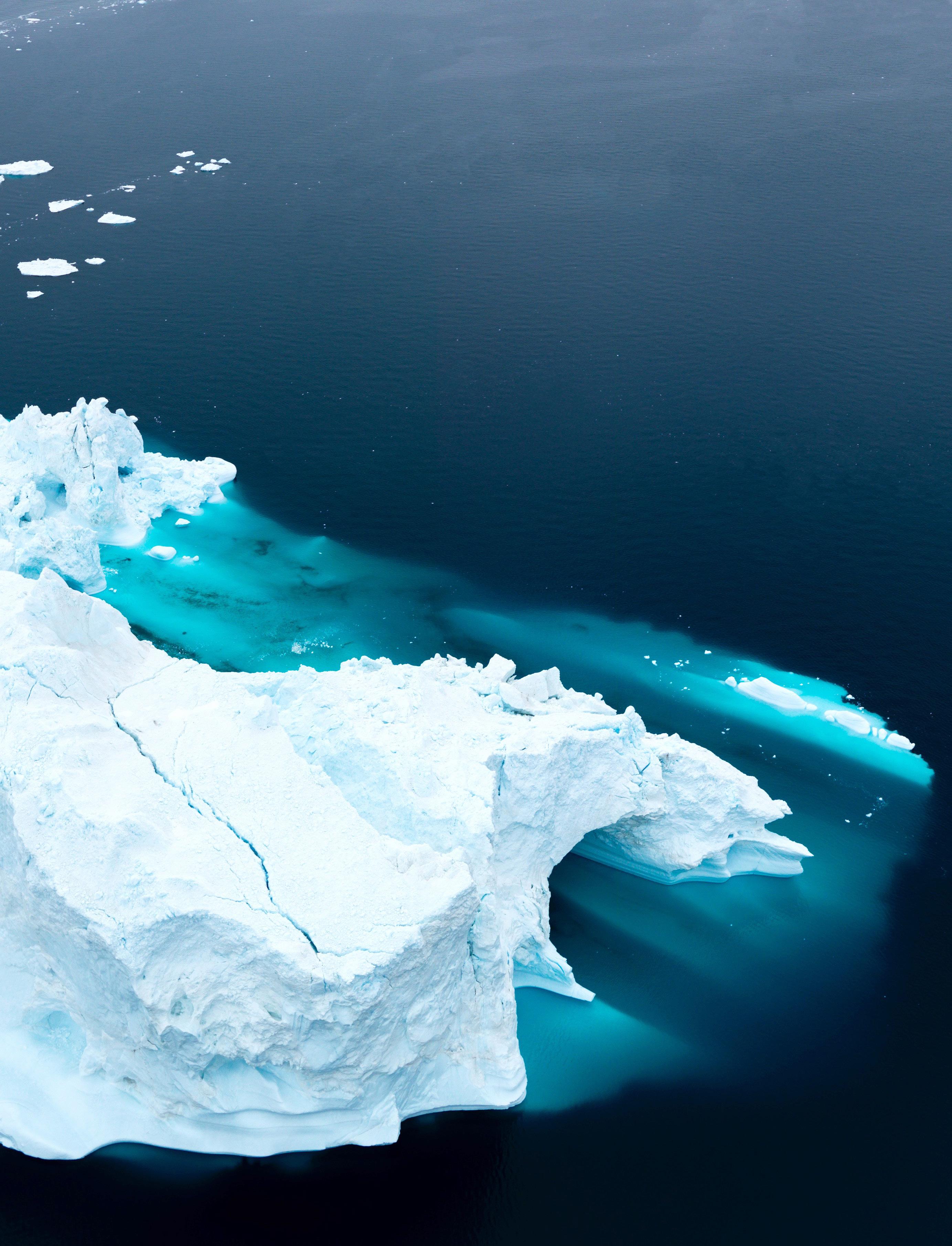


The Great Lakes
A little-known and unspoiled wonder, North America’s Great Lakes might not be the first expedition cruise destination that comes to mind, but it is undoubtedly one of the most surprising and rewarding. As the largest freshwater ecosystem on Earth, the Great Lakes are a dream for nature lovers, with a rich ecosystem of animal and plant life on show across an area that is twice the size of Pennsylvania. But it’s not just natural beauty you’ll find in the Great Lakes. This region is also home to some of the most interesting cities in North America, including Chicago, Milwaukee, Toledo, Cleveland, Toronto and Detroit.
Viking Expeditions cruises the Great Lakes between March and October, when the weather ranges from cool and mild to hot and humid. In this untouched wilderness, spend your days kayaking glassy waters alongside acrobatic otters, hiking verdant national forests and visiting some of North America’s most astonishing natural marvels, including magnificent Niagara Falls. Drop by one of the apple and cherry orchards or picturesque wineries peppered around the lakes. Visit Canada’s esteemed museums, rich with art inspired by the scenery, and transit feats of engineering such as the Welland Canal and Soo Locks. With so much to see, do and experience, expect a journey full of thrills and delights as you sail your way across the Great Lakes.
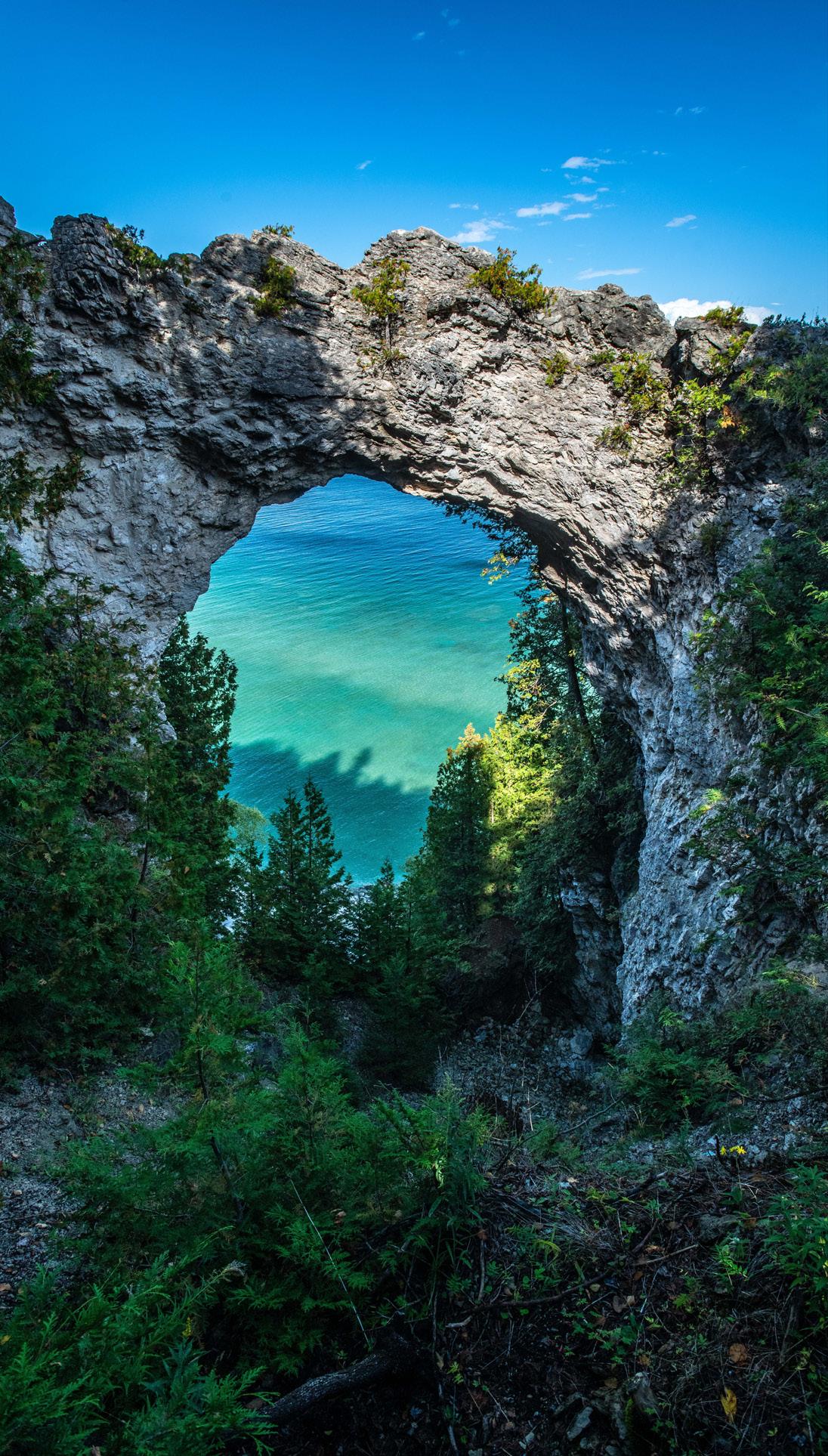
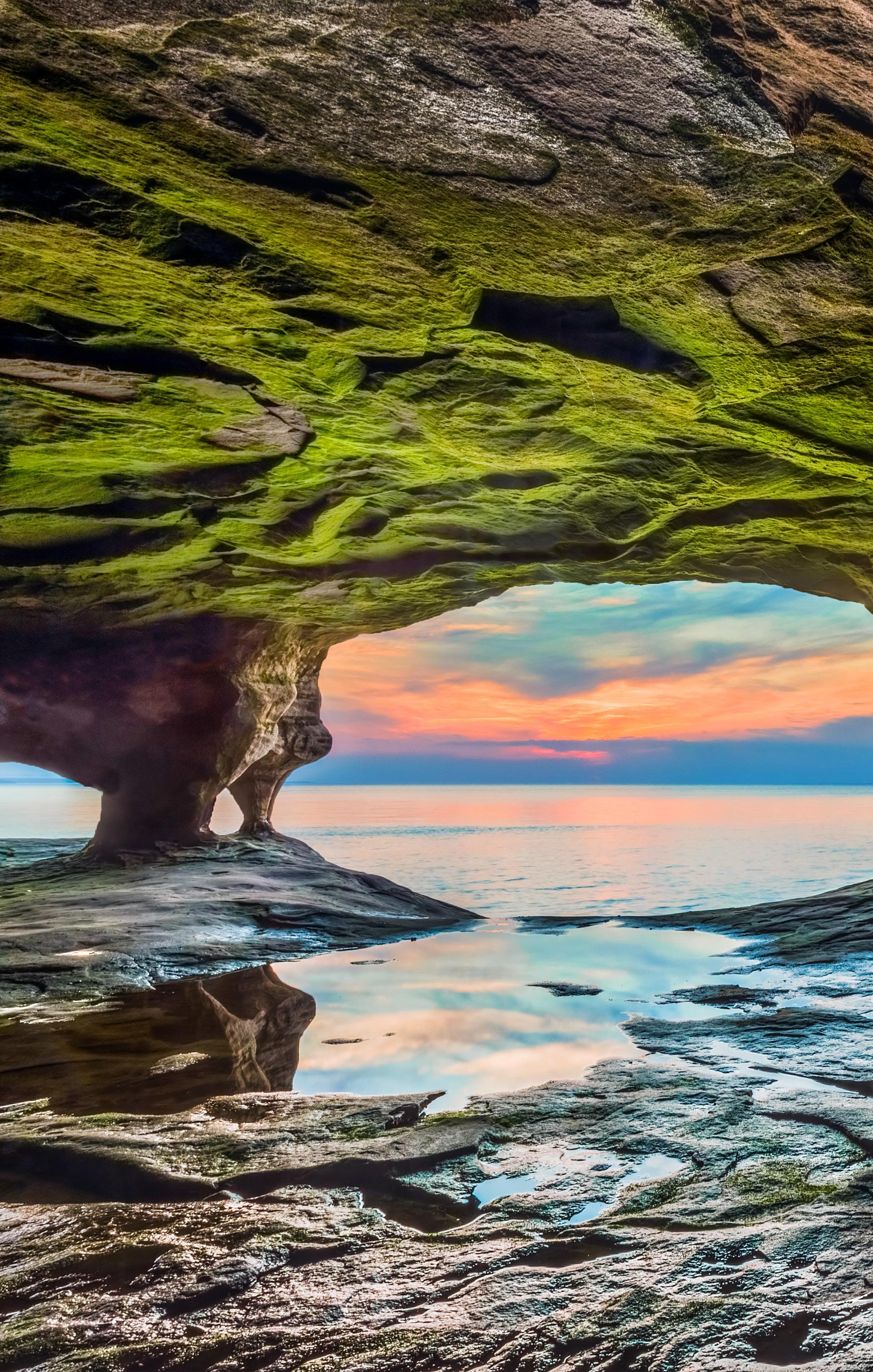
Spring: March to May
While the Great Lakes’ frozen winter surfaces offer some of the season’s best leisure activities including skating, skiing and sledding, few can resist the fresh optimism that comes with the onset of spring. By the end of March, the spring thaw is well underway, with the ice cover gradually melting to reveal the brilliant blue of the Great Lakes’ depths beneath. With the plants and trees budding, wildflowers blooming and warblers singing, spring is a beautiful time to enjoy the rich biodiversity of the Great Lakes.
Summer: June to August
In the sun-soaked days of summer, cruisers can enjoy high temperatures in the 30s and humid, tropical conditions. The scenery of the Great Lakes is a sight to behold in summer, with the long, sultry days perfect for water pursuits, wether in the form of kayaking on stunning Georgian Bay, meandering pristine beaches or exploring coastal wetlands. By late August, the leaves on the trees in the most northern areas of the lakes will begin transitioning to fiery autumn hues.
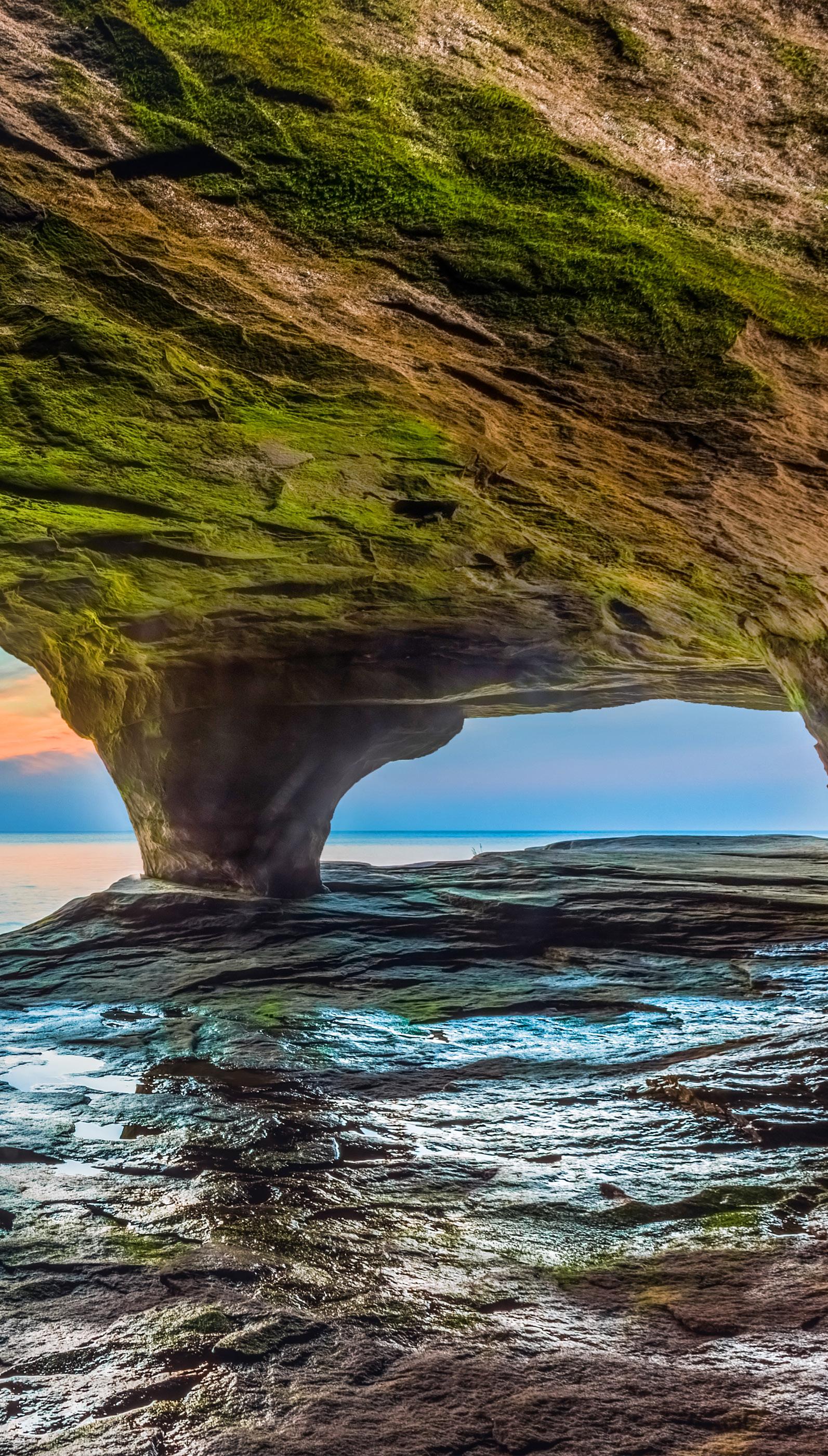
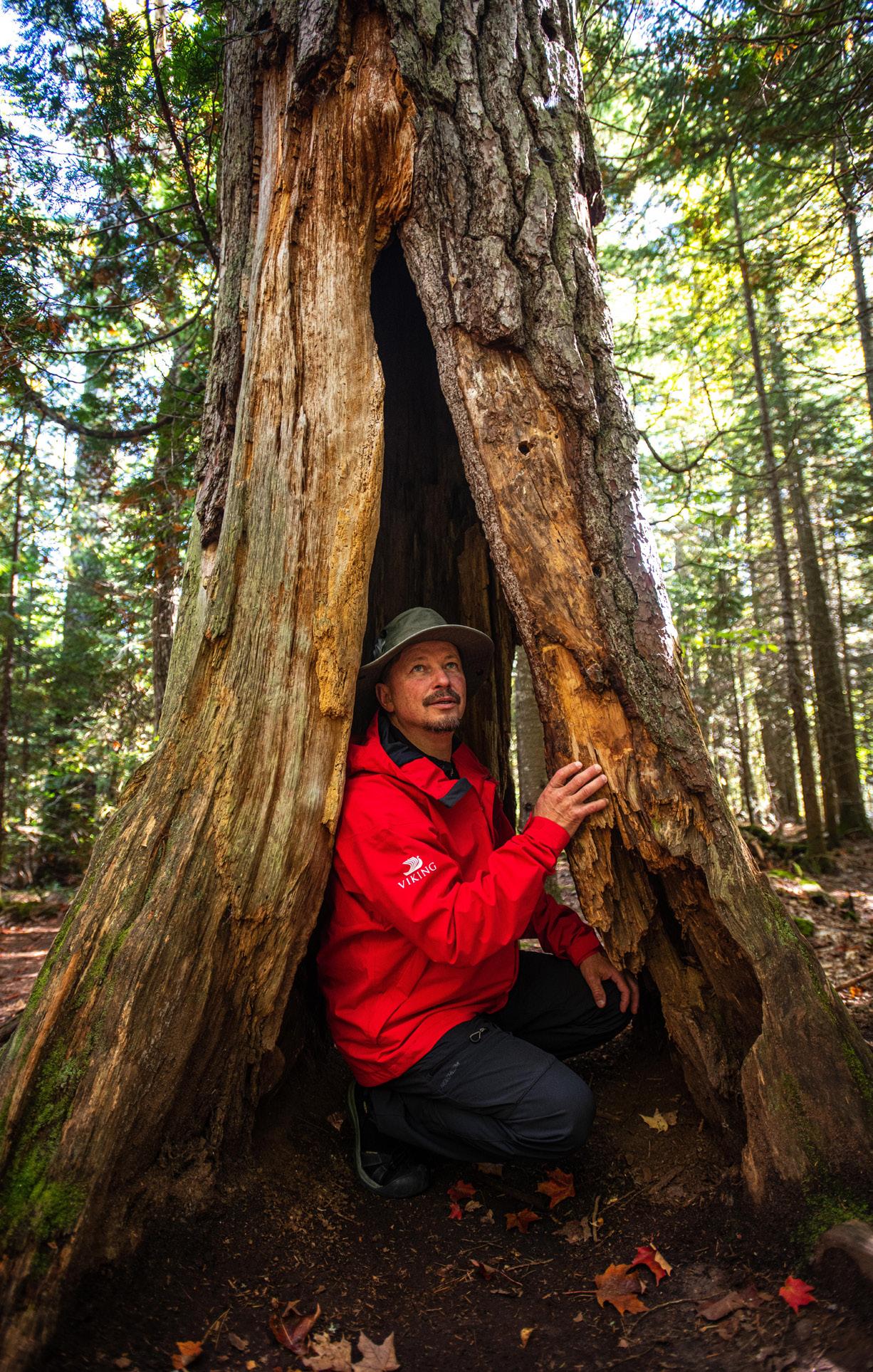
Autumn: September to October
Autumn in the southern parts of the Great Lakes is a season made for photographers, with the golden leaves of sugar maple, basswood, oak, beech, birch and aspen trees lighting up the lakes’ hardwood forests. This dreamy time with cooler temperatures is also ideal for hiking the Great Lakes’ stunning boreal forests such as the Sleeping Giant Provincial Park on Lake Superior’s northern shore.
Left to right: Arch Rock, Mackinac Island, USA; Sandstone sea cave, Lake Superior, USA; Copper Habor, USA Next page: Sleeping Giant, Thunder Bay, Canada

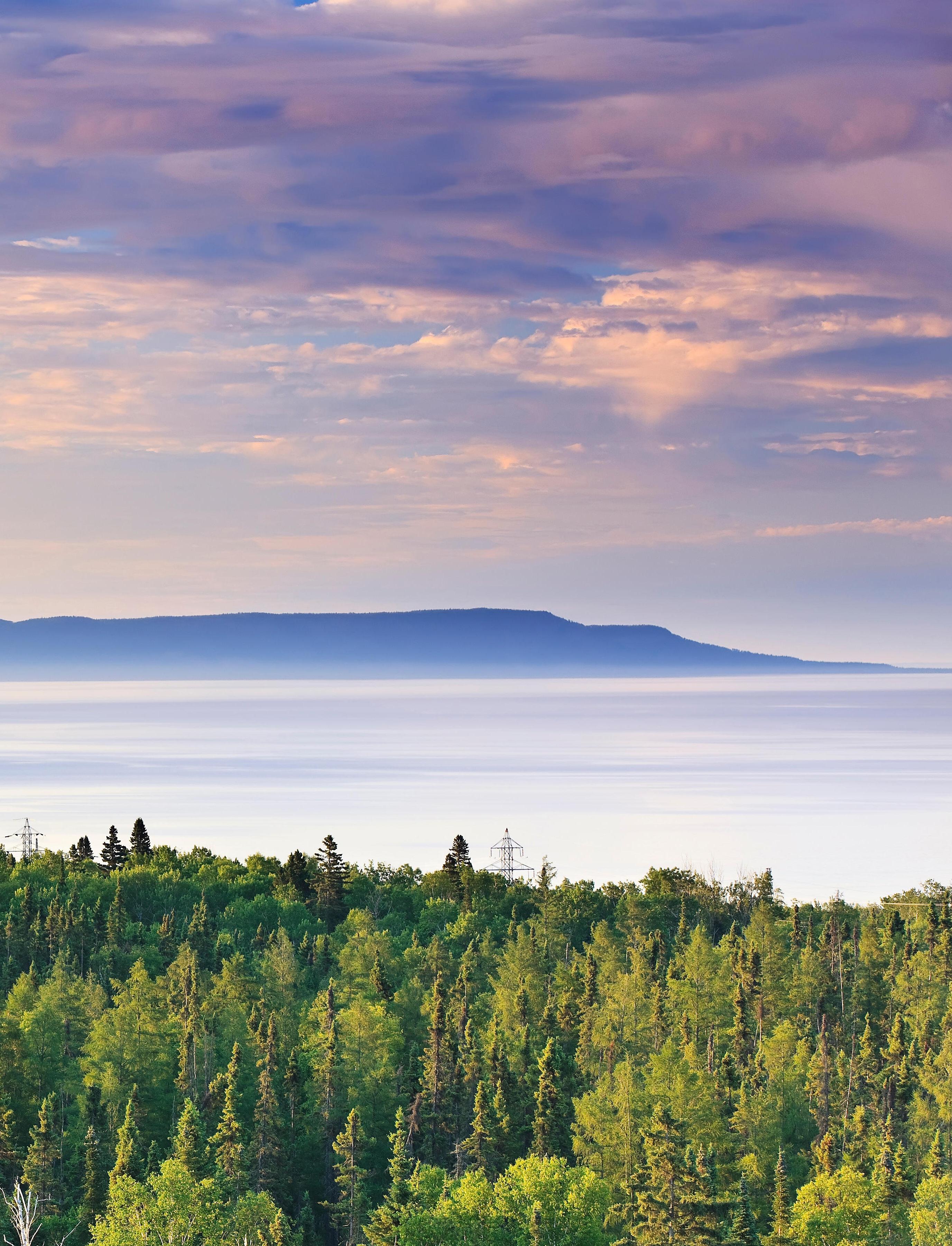
Designed For Discovery
On a Viking expedition, we give you more ways to explore, more often. We have raised the bar when it comes to our custom-built expedition ships, and our excursions, equipment and facilities are no different. What is different to other expeditions, is the fact that our fleet of military pro zodiacs, convertible RIBs (rigid inflatable boats), two-seater kayaks and two yellow six-seater submarines are complimentary for all guests to use throughout their voyage.
When it’s time for an adventure off-ship, simply head to our ground-breaking internal marina, The Hangar, where you can board expedition RIBs from inside the ship. With just a few easy steps, find yourself comfortably in a RIB, ready to launch into the great blue beyond.
Because nature can be unpredictable, the Viking Expeditions App will give you the freedom and flexibility to manage your excursions and on board activities in real time from anywhere on the ship. There’s no rush or fear of missing out. With Viking, you can explore at your own pace and enjoy a profound, memorable expedition experience.
Six-seater Yellow Submarines
Enjoy complimentary access to two largecapacity Uboat Worx Sub 7 submarines. Both comfortably accommodate six guests and a pilot for an incomparable undersea experience. The revolving seats and the nearly 270° spherical windows offer an undistorted view in all directions for every guest.
Two-seater Kayaks
With superb stability, these easy-to-operate, Arctic-tested kayaks seat two people and have a pedal system that lets you glide through the water hands-free, maximising your photo opportunities.
Science at sea
Experience a new level of education at sea by participating in collaborative science during your excursions, facilitated via landings by zodiac, RIB cruising or submarine journeys.
12-seater Convertible RIBs
Take advantage of these two 12-seater oceangoing RIBs (rigid inflatable boats), built for exploration. A dual water jet system, individually suspended seats and — when converted to a covered RIB — the option to sit in an enclosed cabin are all industry-leading features.
Military Pro Zodiacs
Designed for professional use in the harshest of environments, these zodiac MilPro MK5s are reinforced throughout, yet comfortable enough for a day of exploring your new destination.
Expedition Gear
We provide all of the gear that you need to explore – from boots, trekking poles and binoculars to waterproof pants, snowshoes and skis – at no charge.
Clockwise from top left:
Six-seater submarine; 12-seater convertible RIB; Military pro zodiac; Twoseater kayak


